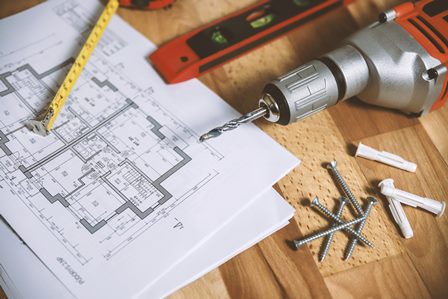
It might seem obvious that a floor plan is needed to evaluate a space since Feng Shui deals with how people are affected by the architecture. And yet, many Feng Shui practitioners try to wing it and advise clients without a drawn floor plan to refer to.
Firstly, we need to have a to-scale floor plan sketch in order to accurately divide up the areas into directional zones. We have geometrical guide lines about how to divide up the spaces. Since we use elements strategically in classical Feng Shui, it should be unthinkable to risk placing an element in the wrong area. And yet, some schools rely heavily on “intention” and cultural placebos to modify spaces. If that was the full extent of Feng Shui, then we wouldn’t need to work with a floor plan at all. But in classical Xuan Kong Flying Star School, we are attempting to change the magnetic field of certain areas, so the boundaries of each area have to be recognized. As an example, if you intend to place water in the east sector of a house, you need to make sure it is not actually in the Northeast or the Southeast. In the same way that an acupuncturist does not place needles randomly anywhere on the body, we have to know the correct locations for placing such elements as water, wood, fire, earth or metal.
Without an accurate floor plan, it can be less obvious to the naked eye how to track the air currents’ movement through the interiors, especially a large space. And yet it is so easy to see it all at a glance with the floor plan in front of us. In fact, we can even forewarn and advise a person regarding a house not yet built, if we have a proposed floor plan to refer to.
Another critical reason for having an accurate floor plan is in the circumstance where a home has been remodeled or added on to. In some cases, a house with an addition might be considered more than one house, technically, if we evaluate the addition as a separate “house.” If an addition constitutes more than half the square footage of the original foot print, then this may justify calculating the entire house as new, with the more current energy taking over the whole space, based on when the addition was done.
Sometimes only small adjustments need to be made, a mere few feet to work with, to move a desk from a negative zone to a positive zone, but we can’t know that without an accurate floor plan. Another piece of practical advice I routinely give clients are the yearly zones to be wary of in terms of remodeling or accidents.
For example, in certain years, the directions of W/NW and E/SE can be very accident-prone. If I have a client who wants to remodel their kitchen in that location and that year, we might consider postponing it or doing some specific counter-measures to diffuse the volatility of that area. But if we aren’t working with an accurate floor plan, then we could misinterpret where a directional zone is within a house. All of these theories apply to commercial spaces as well.
Author: Kartar Diamond
Company: Feng Shui Solutions (R)
From the Architecture & Design Series
